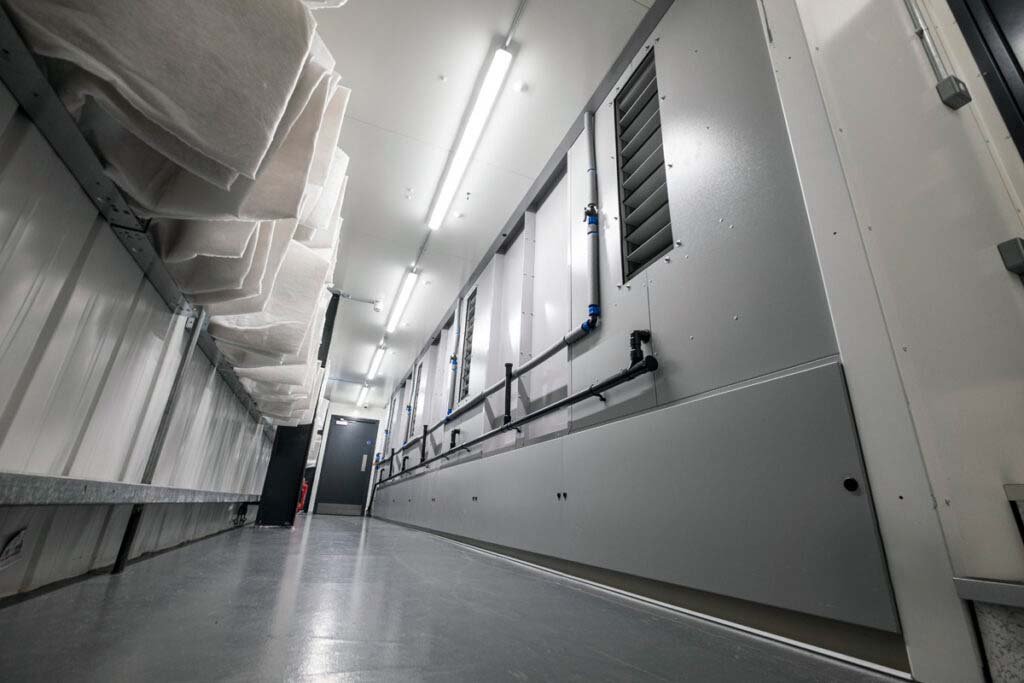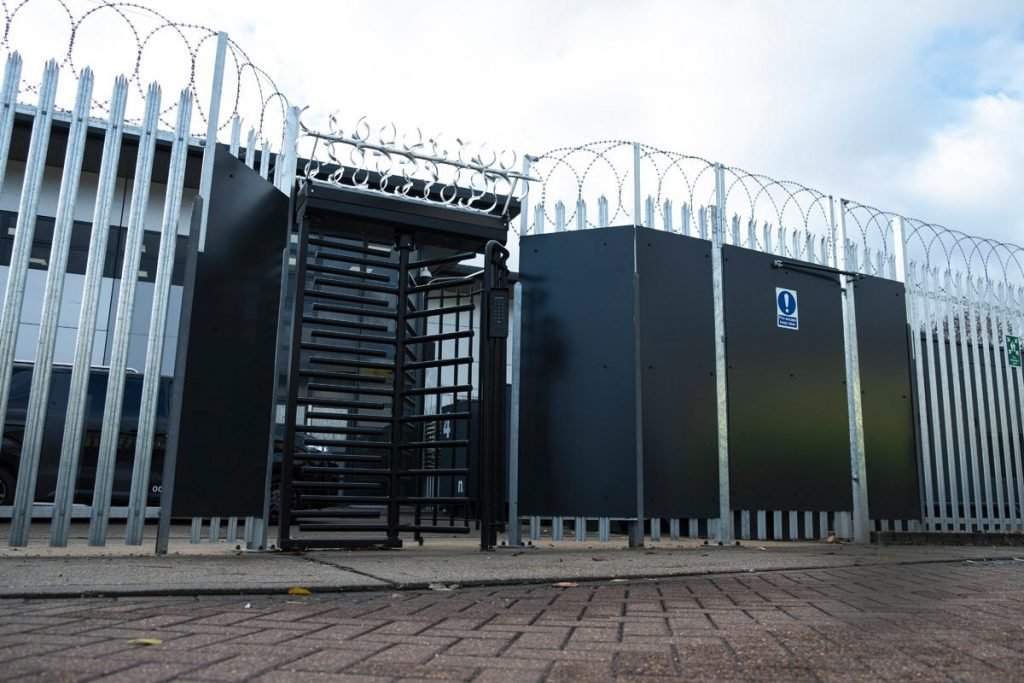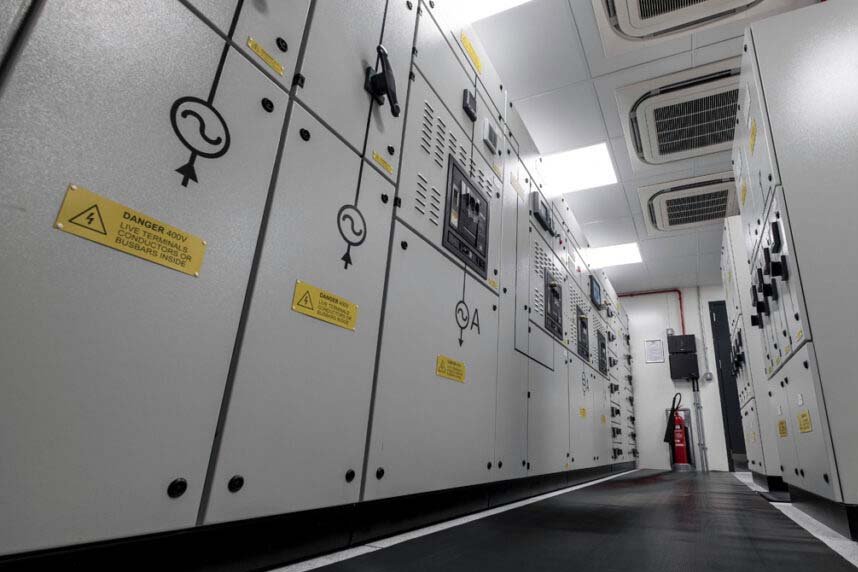Nestled in East London, our new primary hosting facility offers more than just a haven for our servers. It sets new standards in energy efficiency, embracing cutting-edge technology to ensure sustainability, steadfast security and superior reliability.
Embracing Efficiency
Whilst many people may know that hosting servers require a lot of power, few people realise that a vast amount of power is also required to keep them cool. Power Usage Efficiency (PuE) is the benchmark that gauges how green and efficient a datacentre truly is.Decoding PuE: A Simple Analogy
Imagine you're throwing a pizza party, and you want 10 pizzas for your guests. To ensure everyone gets a pizza slice, you actually have to order 12 pizzas. Why? Well, 10 pizzas are for your hungry friends (that's the real deal), but the pizza place has this rule that for every 10 pizzas, they bake an extra 2 as a "chef's fee." Those extra 2 pizzas? They don't go to your party; they're for the hungry chefs. Kind of a weird rule, huh?
In the world of datacentres, that's what PuE is about. It represents how much power is used by the computer servers (the 10 pizzas you wanted) and how much extra energy goes into things like cooling and lighting (the additional 2 "chef's fee" pizzas). A PuE of 1.0 would mean you get exactly what you ordered, no extras. A PuE of 1.2, like our pizza analogy, means for every 10 units of power you want for servers, you actually need 12 units because 2 are used to power the cooling, lights and other power requirements of the building. So, the lower the PuE, the more efficient (and therefore green) the datacentre!
At one time, it was thought that Google's PuE of 1.21 was as close to perfect as possible. But thanks to robust engineering and advancements in energy-efficient cooling technology, our East London facility is in a pizza-saving class of its own, designed to achieve a world-leading PuE of 1.05. While still ramping up to full capacity, it’s currently operating at an impressive 1.09, already outperforming most global datacentres. When many facilities essentially order 20 pizzas just to get 10, ours barely asks for any extras — just one extra pizza slice to run everything smoothly!
While the use of renewable energy is crucial in minimizing carbon emissions, the importance of power reduction cannot be overstated. Every watt saved means less strain on renewable energy sources and amplifies their impact. In essence, combining renewable energy with ultra-efficient operations is the gold standard for sustainable technology infrastructure, highlighting the philosophy that it's not just how you source power, but how efficiently you use it, that truly makes a difference.
A New Wave of Cooling
One of the standout features of this facility is its progressive cooling system, which combines free air cooling with evaporative or adiabatic cooling.Yep, ok - I’ll explain that one.
Imagine you're running a marathon in the Sahara Desert (just bear with me here). It's HOT. But every few miles, there’s a kind soul handing out wet t-shirts. You take one, throw it on, and boom! For a while, you feel cooler as the water from the shirt evaporates. That's evaporative cooling in a nutshell.
Okay, but How Does It Work for Servers?
Servers are the marathon runners of the tech world – they work hard and get hot. Really hot. But instead of wet t-shirts, our East London facility uses something called EcoCooling units. These units pull in the outside air and pass it over something like a big, wet sponge (known as a CelDek filter pad). As the air goes over this drenched pad, water evaporates, making the air cooler. This cool air is then circulated around the servers.
And the Benefits?
- No Harmful Stuff: Unlike old-school methods that relied on chemicals and refrigerants (basically like putting your servers inside a giant fridge), evaporative cooling is natural. It’s just air and water doing their thing.
- Energy Efficient: This method is like that friend who always remembers to turn off the lights. It’s energy efficient! You're mainly using the power to move air and a bit to keep the pads wet. That's it.
- Adaptable: On colder days, you don't even need the wet sponge trick. The cool outside air alone does the job. And when London turned into an oven with temperatures hitting 40°C in 2022? The evaporative cooling took it in stride. Though there's a backup traditional AC system on standby, it never had to step in, while other datacentres were struggling to keep their cool.

The expansive evaporative cooling system in all its glory. The whole rear facade of the building serves as both an entry and exit for airflow.
Design Excellence with Cold-Aisle Containment
Servers are a bit like our brains during an intense exam; they require the right conditions to operate efficiently. Just as we need a calm environment to focus, servers need a continuous supply of cool air to function at their best.But there's a twist: while they crave cool air, they're simultaneously generating heat—loads of it. The challenge? Efficiently delivering the cool air they yearn for and managing the hot air they produce.
Enter Ziehl Abegg high-efficiency fans, often regarded as the Rolls Royce of the fan world. Their fans aren't just about blowing air; they're about precision air management, celebrated for both their reliability and unparalleled energy efficiency. With Cold Aisle Containment, this air management reaches new heights of efficiency. If that term has your head spinning a bit, no worries.
At its core, containment in datacentres is all about preventing the cold and hot air from having an inefficient dance-off. In simpler terms, it's about ensuring the cool stays cool and the heat knows its place. Now, let's break down three pivotal cooling strategies to illustrate why Cold Aisle Containment stands atop the podium.
- No Containment:
Inefficient datacentres have no containment. Think of this like trying to cool your house during summer, but with all the windows open. The cool air your AC pumps out constantly mixes with the hot air from outside. It's a never-ending, energy-guzzling tug-of-war, leading to higher energy costs due to the inefficient cooling process. - Hot Aisle Containment:
Imagine living in a spacious house and using the AC everywhere, even though everyone primarily gathers in a couple of rooms. Hot Aisle Containment works similarly. Servers send their heat into a confined "hot aisle" while the larger surrounding space is cooled. Although this method segregates warm and cool air, a significant amount of energy is still dedicated to cooling the larger cool area, which isn't as eco-friendly as it could be. And let’s not forget about the brave technicians who occasionally step into this 'sauna' of a hot aisle. Talk about feeling the heat! - Cold Aisle Containment:
This is the pièce de résistance. It's as if you're only focusing on cooling the rooms where people are active, letting other areas run warmer. For servers, this tailored approach means their specific "rooms" or aisles are kept at optimal temperatures. Less space to cool = big savings in power. Plus, the genius part: in our East London facility, the warm air the servers produce isn’t just expelled from the building— it can be cleverly harnessed to keep other parts of the facility warm when it's cold outside.
Cold Aisle Containment clearly takes the trophy. By precisely cooling what needs to be cooled, it achieves even higher efficiency, reduces power consumption, and embodies sustainability at its best.

A Cold Aisle containment pod. Cold air blows in from the vents at the bottom, and is contained with a glass ceiling and doors at either end.
Solar on the Horizon
With designs already in place, the facility is additionally gearing up to incorporate a roof-mounted solar panel array. This upgrade will power non-critical loads with direct on-site access to renewable energy, further enhancing its PuE potential. The integration of this solar initiative is projected for 2024-2025.Unwavering Reliability and Unyielding Security
While pushing the boundaries of energy efficiency, the facility does not overlook the fundamental need for security and reliability. Upholding the rigorous standards of ISO 27001:2013, its security features include 24x7 proactive monitoring manned by on-site personnel, supported by an exhaustive HD CCTV system. Comprehensive security measures range from sophisticated multi-level pin code and RFID access controls to formidable 2.4M high perimeter fencing, enhanced with anti-climb razor wire—every facet meticulously designed for optimum security.
In terms of reliability, the datacentre stands out. On the power front, it boasts a dual and diverse 1.5MVA A+B grid system. Seamless operation is guaranteed with the backup of N+N and N+1 UPS systems, offering at least 10 minutes of autonomy. To ensure power availability in any circumstance, there are N+1 diesel generators, supported by a 48-hour on-site fuel reserve and 24x7 refueling contracts.

Our East London facility transcends the conventional definition of a datacentre. It stands as a testament to the ultimate blend of sustainability, efficiency, and state-of-the-art design.
This facility represents the vanguard of modern tech infrastructure, showcasing a vision that's both efficient and future-ready.
Host your website with Kualo and pave the way toward a more efficient, secure, and sustainable digital world


